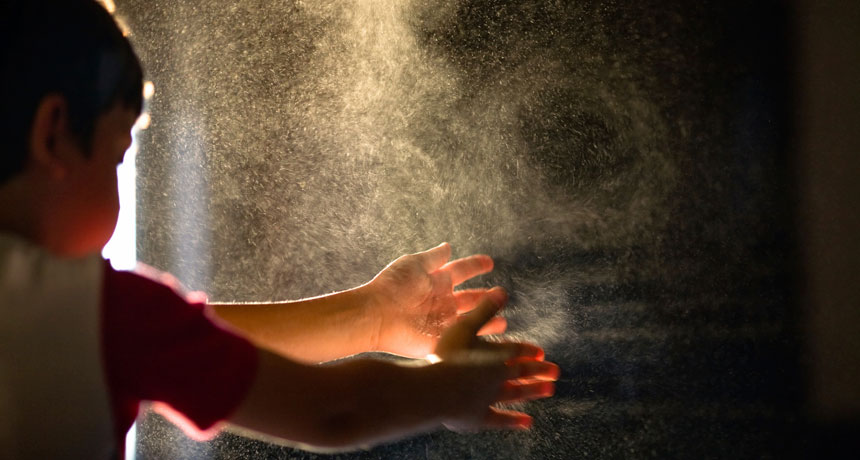News Brief: People shed clouds of tell-tale germs
A new study suggests it might be possible to spy people from the germs their bodies spew into the air

Here we see a cloud of dust surrounding this child. What we can’t see: an invisible plume of germs spewed by the child.
slobo/iStockphoto
Everyone’s storing things in the cloud these days — including, apparently, their own personal germs.
Bacteria that live in and on people form a unique microbial cloud surrounding each of us. This mist spreads through the air. Eventually, bits of it will settle onto nearby surfaces. Sampling the air for evidence of this cloud can be used to identify if someone is in a room. Because the makeup of each cloud is so individual, it sometimes also can point to the actual identity of who is there. James Meadow is a data scientist at Phylagen Inc., in San Francisco, Calif. He and his colleagues at the University of Oregon reported their new findings September 22 in PeerJ.
For their study, they asked each of three volunteers to sit in a sanitized room for four hours. (Don’t worry. They had a sterilized laptop for entertainment.) Meadow’s team found that as each person sat in the room, collection dishes nearby began collecting bacteria. These germs were types typically linked to people. They included one often found on skin: Staphylococcus epidermidis (STAF-uh-low-KOK-us EH-pih-DER-mih-dis). A common mouth resident also showed up: Streptococcus oralis (STREP-tuh-low-KOK-us OR-uh-lis).
Each person’s cloud contained a distinct mix of germs. The amounts of each also varied by person. Every cloud was so different that the scientists could identify someone by his or her microbes.
In a later experiment, five of eight participants could be similarly recognized solely on the basis of their germ cloud. The researchers simply analyzed microbes that had collected in air filters for the room. Two of the five people produced so much microbial material that they could be identified based on cloud bacteria that got stuck in ducts used to move air through the room. And these people shed their germ clouds even while just sitting at a desk.
The fact that the germ clouds differed so much from one person to another “suggests a forensic application.” For instance, police or spies might sample the air to see who was recently present. One limitation: They would need to first know what a person’s typical cloud looked like — sort of like needing an initial fingerprint for comparisons.
Power Words
(for more about Power Words, click here)
bacterium (plural bacteria) A single-celled organism. These dwell nearly everywhere on Earth, from the bottom of the sea to inside animals.
forensics The use of science and technology to investigate and solve crimes.
germ Any one-celled microorganism, such as a bacterium, fungal species or virus particle. Some germs cause disease. Others can promote the health of higher-order organisms, including birds and mammals. The health effects of most germs, however, remain unknown.
microbe Short for microorganism, a living thing that is too small to see with the unaided eye, including bacteria, some fungi and many other organisms such as amoebas. Most consist of a single cell.
sanitize The process of removing substances that can spread disease.
ventilation A system that supplies a room with fresh air or processes that move air around and between different rooms.







